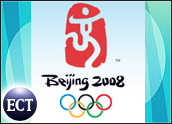
Given growing public concerns about energy independence,security and climate change, U.S. states and the federal government are adopting legislation and offering incentives in support of the rapidly growing renewable energy and power industry, and California is playing a leading role.
The introduction of the California Solar Initiative (CSI) is set for January 1. The largest program of its kind to date with a US$2.9 billion budget, CSI aims by 2017 to facilitate and finance 3,000 megawatts (MW) worth of solar-generated electrical power throughout the Golden State by installing solar photovoltaic (PV) systems in some 1 million California homes, businesses and public buildings.
Solar power currently makes up only 0.3 percent of California’s electricity supply, according to independent industry statistics.
The renewable energy snowball is gaining momentum, spurring the evolution of a full-blown economic ecosystem — from small local businesses selling and installing solar PV systems for the residential retrofit market to large-scale commercial and residential installations that involve public and private utilities, large corporations and a range of government departments and agencies.
Electronic and solar-grade polysilicon is the critical material in the supply chain, and manufacturers are ramping up production after being caught short last year.
Supported and driven by an increasingly credible business case, the growth of the renewable energy industry also has government and industry leaders — along with the general public — considering corporate environmental and social responsibility in a new light.
Versatile Silicon
Silicon is the second most common mineral element on earth. It has been widely used since antiquity in construction, metals refining and glass manufacturing.
More recently, it has become a fundamental element in the production of an extraordinary range of everyday consumer goods and intermediate industrial products, including healthcare items; fabrics; automotive, marine, aerospace engine and electrical components; telecommunications equipment; semiconductors; and solar PV cells.
Despite its abundance, the production of refined metallurgical silicon — various grades of which are used to manufacture semiconductors and solar PV cells — is costly, complicated and energy-intensive.
In the past year, amid forecasts of continuing double digit growth rates — and having been caught unprepared by the recent surge in demand for polysilicon — the major manufacturers of silicon that is refined and pure enough for use in semiconductor chips and solar PV cells have announced major expansion plans.
U.S. shipments of solar PV cells and modules shot up 72 percent in 2005, whereas shipments of solar thermal collectors grew 10.4 percent, according to the 2005 annual report of the Energy Information Administration (EIA), which is part of the Department of Energy.
The EIA report cites silicon supply disruptions at Shell Solar as the cause of a 10 percent drop in PV exports, a problem that led Shell Solar to sell its crystalline silicon solar business and focus instead on thin-film solar technologies. Meanwhile, growing U.S. demand for PV systems caused imports to nearly double, reaching a level nearly equal with exports, according to the EIA’s September 20 press release.
“The reasons we’ve had shortages is because solar grade polysilicon is very expensive to produce and it’s not easy to ramp up production,” Hemlock Semiconductor (HSC) spokesperson Jarrod Erpelding told TechNewsWorld.
That has led silicon producers such as Hemlock to launch expansion plans and negotiate long-term supply agreements with customers, in order to help mitigate the risk of making the huge capital investments required to build a modern plant capable of producing refined electronic and solar-grade polysilicon.
HSC, one of the world’s largest producers of electronic and solar PV grade polysilicon, is majority owned and operated by Dow Corning, Japan’s Mitsubishi Materials and Shin-Etsu Handotai.
Other major producers include MEMC (formerly Monsanto Electronic Materials Co.) in the U.S.; Oslo’s REC (Renewable Energy Corp.); Germany’s Wacker Chemie; and Mitsubishi Materials, Sumitomo Titanium and Tokuyama in Japan.
Growing Usage and Expanding Capacity
Silicon as a mineral resource is at the heart of Dow Corning’s origins and its current activities. Jointly owned by Dow Chemical and Corning, the company’s silicon R&D operations are extensive.
Dow Corning subsidiaries are involved in mining silicon ore on their own and as part of joint ventures around the world, including in South America and the U.S. They also have a hand in processing quartzite ore into refined solar PV and electronic grade polysilicon for use in the solar power and semiconductor industries, respectively, Erpelding noted.
Solar energy accounts for approximately 10 percent of all renewable energy produced today, according to company-provided figures. HSC expects the solar energy industry to grow at a 20-25 percent rate during the next 10 years.
At present, HSC is in the midst of a $400-$500 million expansion and upgrade of its polysilicon plant in Hemlock, Mich., which will increase output from a current 10,000 metric tons to 14,500 metric tons in 2008, and to 19,000 metric tons in 2009.
Work on the two project phases is proceeding simultaneously and on schedule, with completion of the first phase expected in January 2008 and the second phase one year later, according to Erpelding.
The facility will employ approximately 500 people directly, as well as an additional 600 or so as contractors.In addition, HSC continues to search for a site for a second facility, an initiative that it announced in August.
“The whole point of both these initiatives is to add capacity, due in large part to high demand for HSC’s solar grade polysilicon. The business case for the expansion plans is coming from the solar industry, but HSC’s expertise is based in electronics. We don’t want to forget about our customers in that sector either, so we are trying to build in some flexibility for ourselves by constructing facilities capable of producing polysilicon products for both markets,” Erpelding explained.
Supply and Demand
Despite growing demand, with planned capacity expansions and ongoing advances in silicon refining, the cost of manufacturing solar PV cells is expected to come down in the next few years, according to a research report released last week by the Prometheus Institute for Sustainable Development entitled “PV Technology, Performance, and Manufacturing Cost — 2006.”
The report predicts that module manufacturing costs will drop to $1.40 by 2015 from last year’s $2.50 level, according to Prometheus founder and director Travis Bradford and co-author Paul Maycock of PV Energy Systems. Comparable reductions are expected for silicon ribbon and sheet, concentrators, amorphous silicon and alternative mineral inputs.
“Today, it’s a supply-side, not a demand-side, problem,” Bradford told TechNewsWorld.
“It used to be that solar PV manufacturers could get all the polysilicon they needed from the electronic-grade supply not used by the integrated circuit industry. For the first time this year, demand by volume for polysilicon by the solar PV industry will outstrip demand from the semiconductor industry, and it will not go back,” he predicted.
“Demand for solar is growing so fast that the polysilicon industry can’t keep up — that doesn’t sound like a problem; it sounds like a growing pain,” he added.
The industry’s growth is also generating jobs. “The growth in the PV industry is good for employment, which surged 6 percent in 2005. A total of 29 companies now provide 3,108 person-years of employment in the U.S. That is enough to provide full-time employment to 3,108 people,” according to the EIA report.





















































